Abbot Hall, 1828-1829, at Phillips Academy
Introduction
Text-to-speech Audio
Images
Sketch of Abbot Hall as it looked in 1829
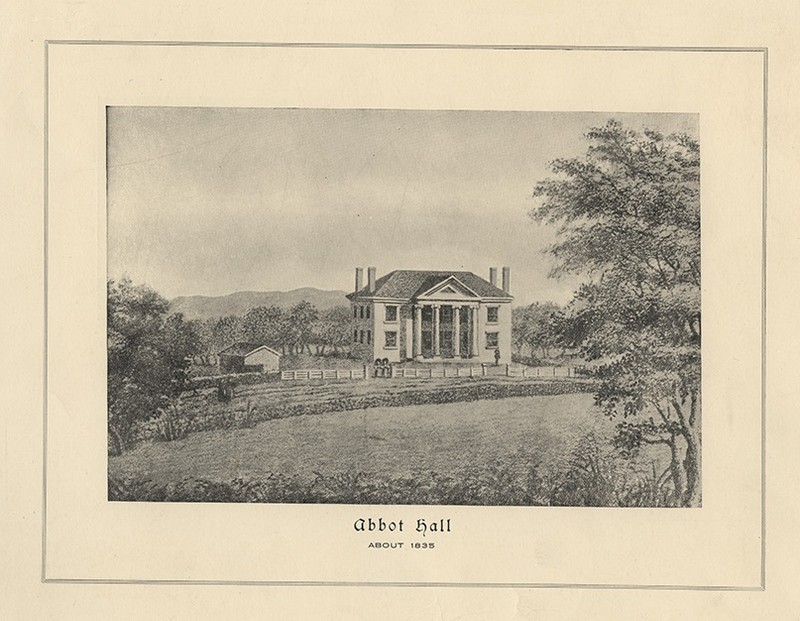
Abbot Academy, 1885. Left to right: South Hall, Smith Hall, Abbot Hall, and Davis Hall.
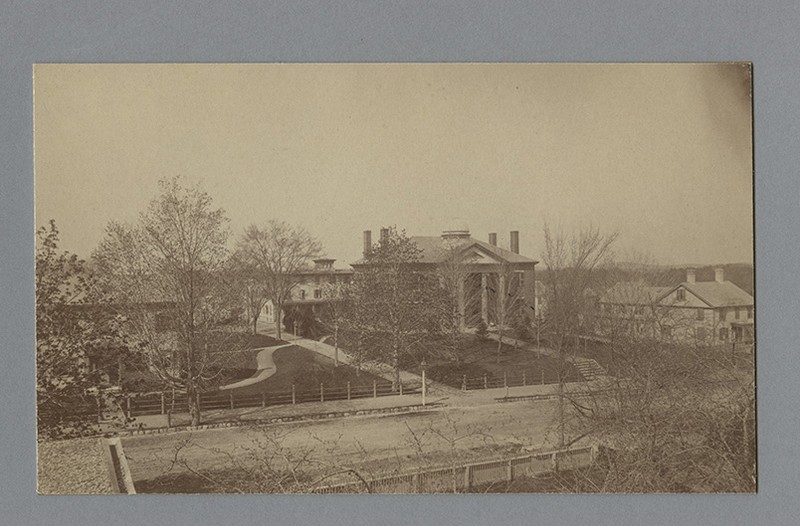
Abbot Hall, 1880s
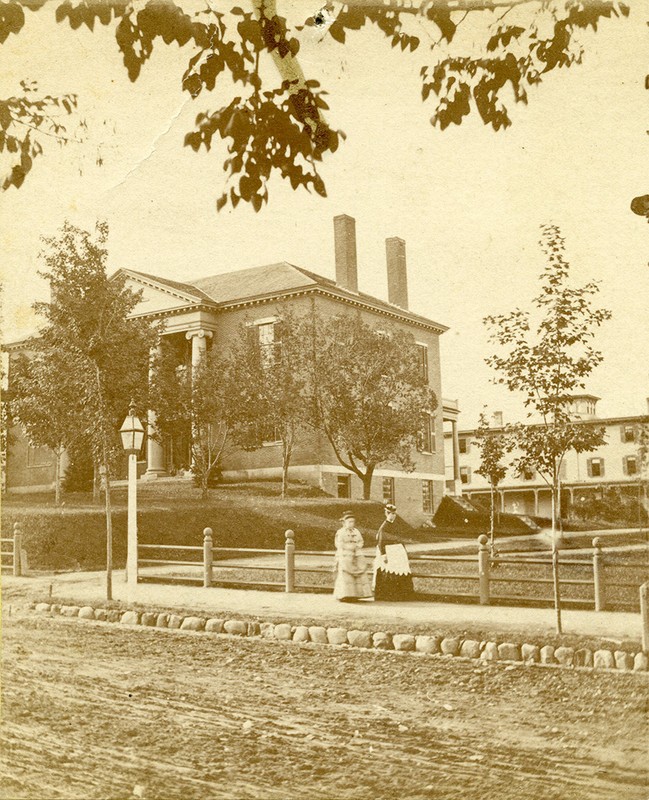
Abbot Hall facing School Street
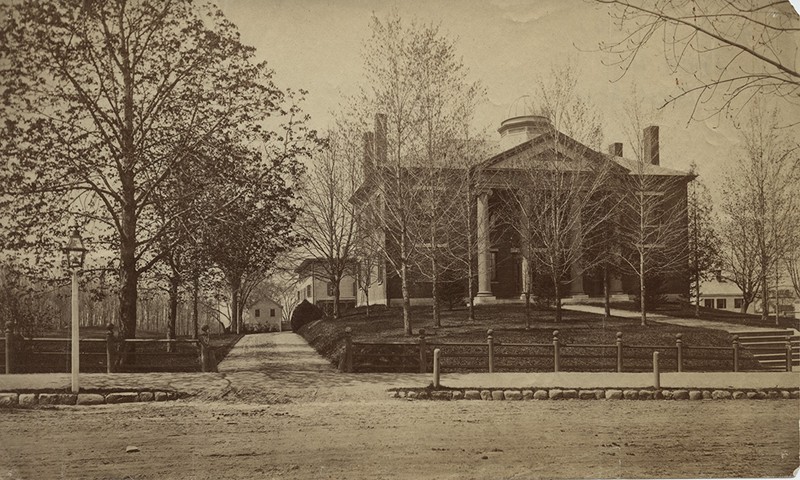
Abbot Academy students in Abbot Hall
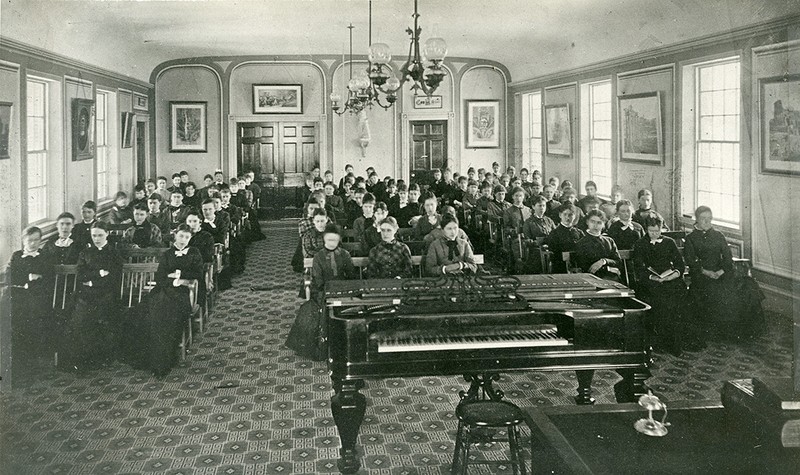
Abbot Hall, 1907
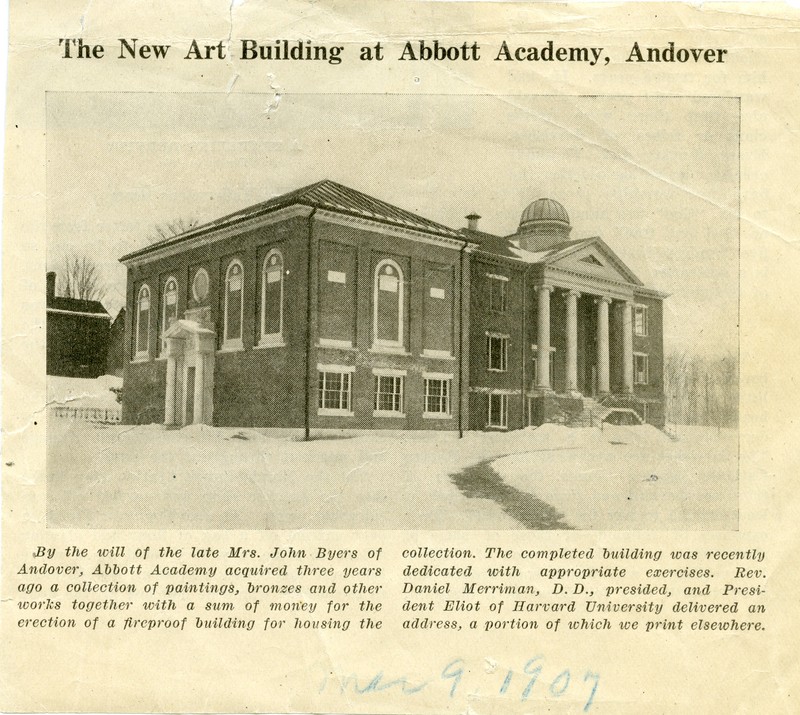
Abbot Hall, 1951, by George Woodruff
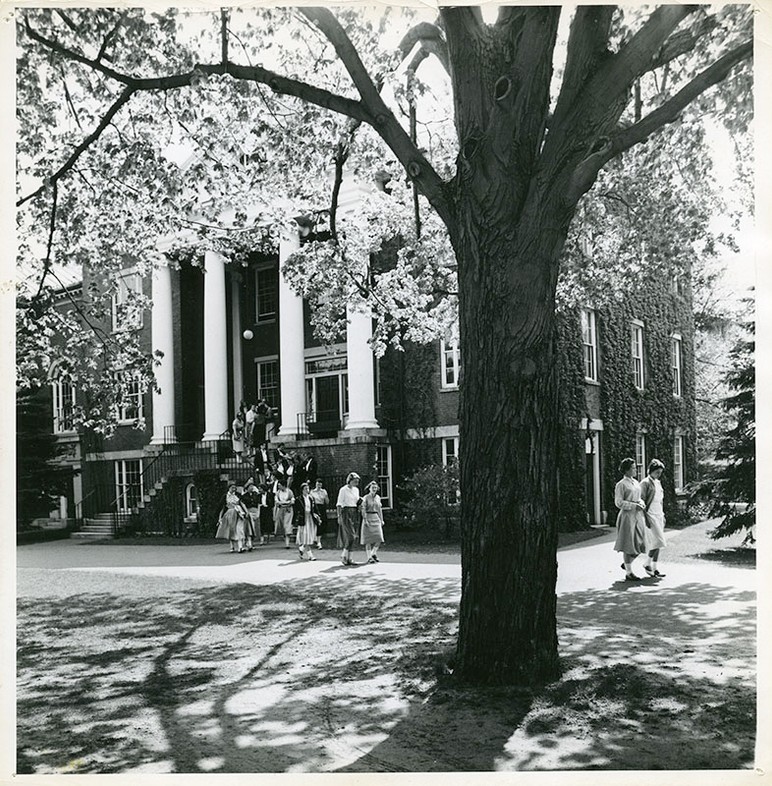
Abbot Hall
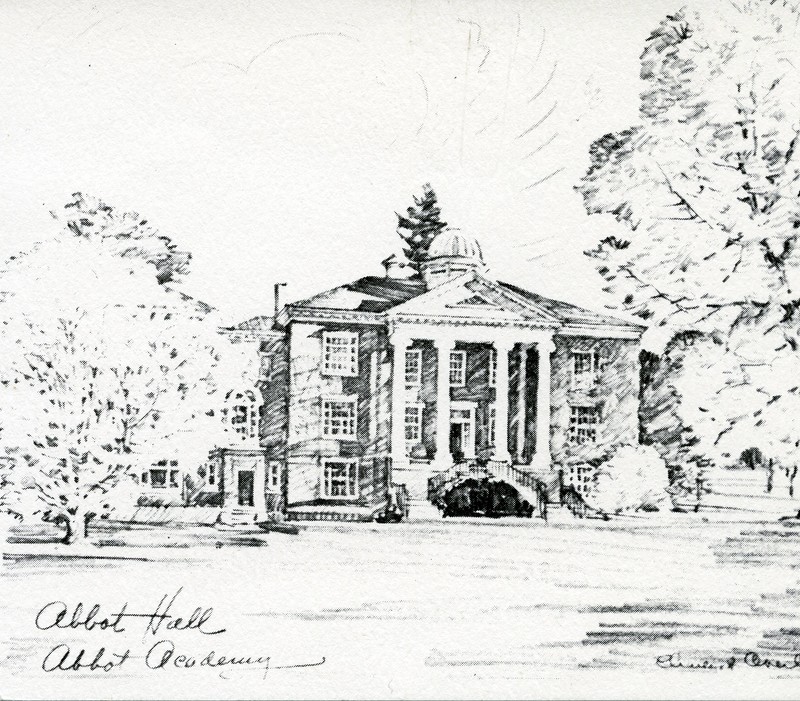
Abbot Hall, 1930s
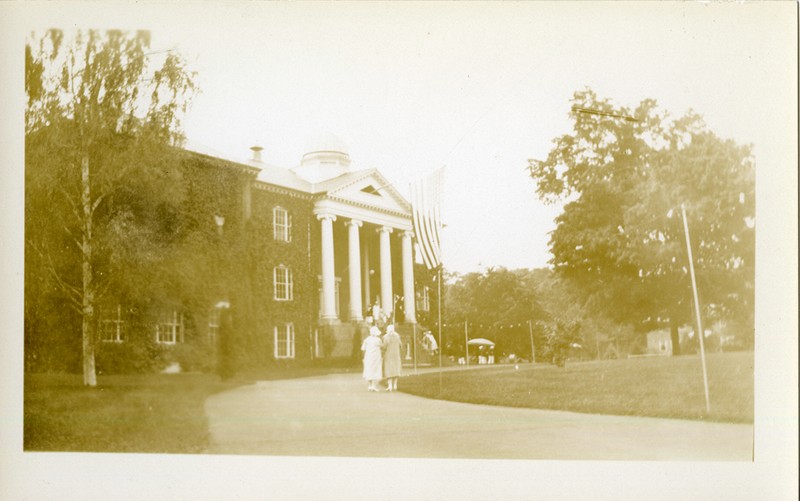
Abbot Hall
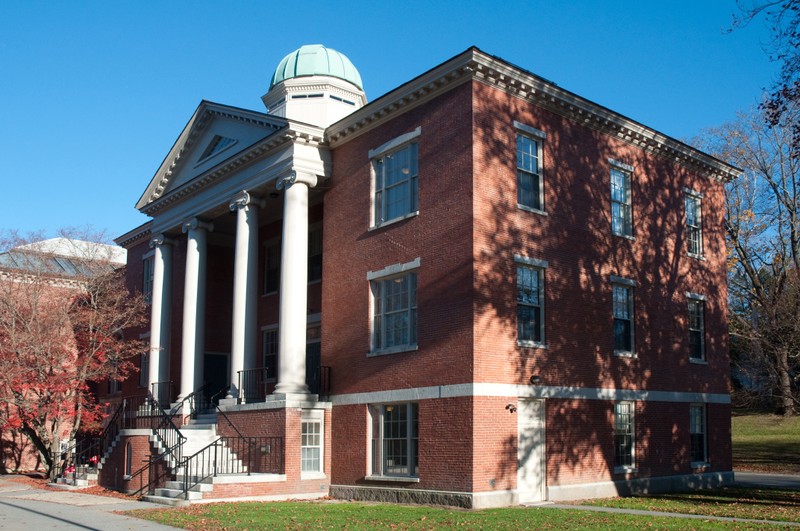
Backstory and Context
Text-to-speech Audio
In February 1828, several of Andover's most prominent citizens, including Samuel Farrar, treasurer of Phillips Academy, and Mark Newman, principal of Phillips Academy from 1795 to 1809, met to consider the establishment of a high school for local girls. A committee of seven men was appointed to select a suitable site, the type and cost of a suitable building, the most promising method of raising the necessary funds, and to develop a schedule for the fundraising. These men, who became Abbot's founding trustees, were part of a larger group that had been committed for some time to establishing a school for young women. The group included Phebe Phillips, wife of one of the founders of Phillips Academy, who died before Abbot became a reality; Caroline Jackson, wife of founding trustee Samuel Jackson; as well as several wives of ministers, schoolmasters, and Andover Theological Seminary faculty. They bought a lot on Main Street and erected a fence, but the site raised concern among the parents of prospective students. The mothers objected to Main Street because "Theologues and academy boys" frequently passed that way. Mark Newman donated a one-acre lot, and Sarah Abbot pledged $1,000. By the time her will was probated in 1830, she had donated more than $10,000 to Abbot Academy. Until 1863, Abbot's campus was limited to one acre.
Construction began immediately, and Abbot Female Academy opened May 6, 1829 with seventy students. The course offerings were "a very liberal series of studies" that included Greek and Latin, history, geometry, algebra, theology, French, Italian, German, English literature, music, botany and mineralogy as well as access to chemistry and geology lectures at Phillips Academy. The Abbot curriculum, which came to be known as the "Academic Course," was essentially a wide-ranging and scholarly education for life. Often a woman would pursue her studies for five years, not graduating until age 22 or 23. Preparation for college was neither an issue nor even a possibility. Not until New England's colleges for women were established later in the century would a baccalaureate degree be seen as a viable alternative to the course of study that Abbot offered.
Like Phillips Academy and Andover Theological Seminary, Abbot Academy had a traditional Calvinist theology at its core during the 19th century. Historian Susan Lloyd describes Abbot's foundations as "a double commitment to basic intellectual training and moral guidance, a commitment strengthened by a habit of resistance to passing fashions, and by--above all--a respect for the importance of women in American society." Indeed, for a period during the 19th century, the school was called Abbot Female Seminary.
Known later as Abbot Hall, the Academy building initially provided only classrooms and recitation rooms. A residential building was not constructed until 1854, when Smith Hall was erected. Abbot Academy officially merged with Phillips Academy in 1973.
Sources
Academy Hill: The Andover Campus, 1778 to the Present. New York: Princeton Architectural Press, 2000.
Domingue, Robert A. Phillips Academy Andover, Massachusetts: An Illustrated History of the Property (including Abbot Academy). Wilmington, Mass.: Hampshire Press, 1990.
Lloyd, Susan McIntosh. A Singular School: Abbot Academy, 1828-1973. Hanover, NH: University Press of New England, 1979.
Montgomery, Susan J. and Roger G. Reed. Phillips Academy Andover: An Architectural Tour. New York: Princeton University Press, 2000.
Phillips Academy Archives and Special Collections
